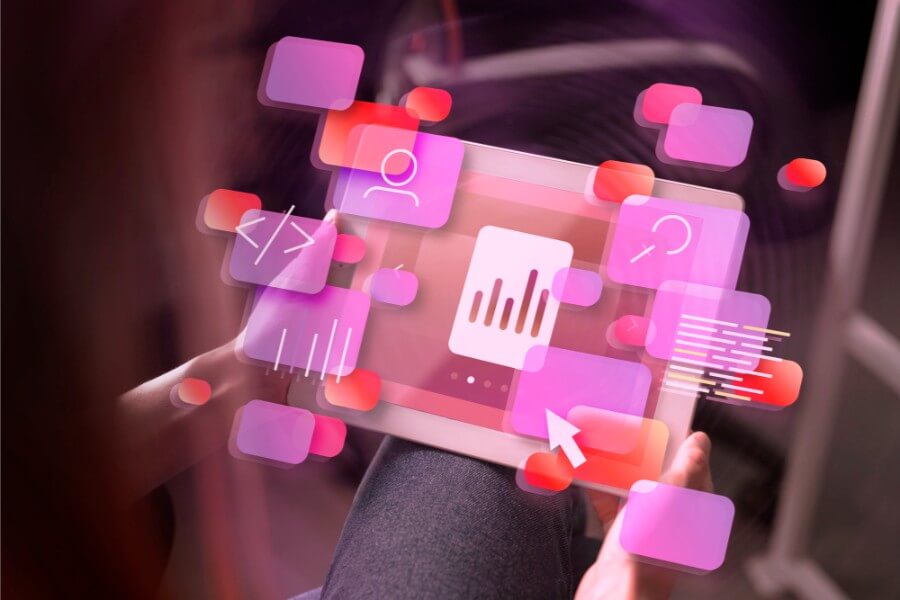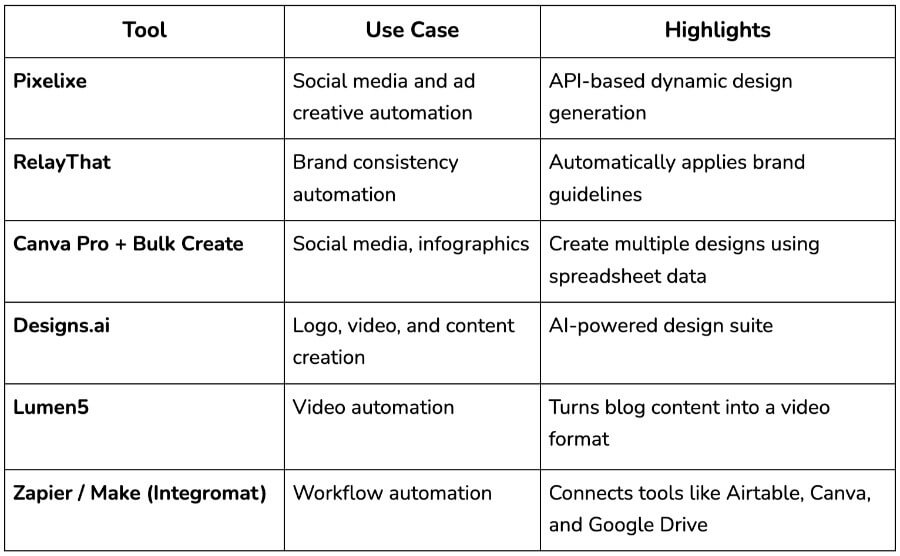
The speed of digital innovation requires marketing teams to make top-quality visual content that travels across various channels with a constant requirement for enhanced performance. Manual creation of attractive visual materials specifically for different audience segments across multiple channels throughout marketing initiatives remains a time-consuming task. That’s where automation steps in.
Visual content automation maintains brand consistency through operational efficiency and instant market reaction capabilities, as well as preserves standardization across all operations. The paper investigates visual content development automation for businesses through existing software solutions and presents practical methods for reaching marketing achievements.
Why Visual Content Matters in Marketing
Before beginning automated tasks, one must first know how visuals work as a power source.
Compared to posts based on single text content, social media images drive 650% more audience participation (Webdam).
Brain Rules demonstrates that visual content remains in the human brain for 65% retention during three days, but written content only stays for 10%, according to research.
Research established that images enhance user engagement with content by 80% (Xerox).
Visual content in social media designs together along with infographics with creative advertisement materials, and visual email elements, alongside product video content, helps increase both audience participation levels and conversion numbers. Service design principles can guide how these visuals are tailored for each user journey, ensuring more intuitive and meaningful interactions across different platforms—far beyond what price-controlled human resource management can deliver. The need for content personalization across different platforms surpasses what price-controlled human resource management can deliver.
What is Visual Content Automation?
The process of using artificial intelligence to create design assets automatically defines visual content automation. Machine learning algorithms and APIs in these tools generate visual designs that content management systems supply to design libraries to accelerate platform and marketing content generation.
Key Features of Visual Content Automation:
Template-based creation
Dynamic content rendering
Batch design generation
AI-assisted design suggestions
Branding enforcement
Benefits of Automating Visual Content Creation
Scalability: Generate hundreds of designs for different target groups and channels in minutes.
Consistency: Maintain brand identity across campaigns.
Speed to Market: Launch time-sensitive campaigns instantly
Cost Savings: Reduce dependency on large design teams or agencies.
Customization: Personalize visual content using dynamic data inputs
How AI Is Transforming Visual Content Automation?
In contrast to conventional automation, which makes use of pre-made templates and rules, AI is bringing a whole new level of intelligence, flexibility, and imagination to the process of making visual content.
Contemporary AI in marketing goes beyond simple design replication and involves data analysis, trend identification, and context-dependent visual generation. AI is changing the future of marketing graphics in several methods.
1. Design Suggestions Driven by AI
Adobe Firefly, Canva Magic Design, and Designs.ai are a few examples of AI applications that may rapidly recommend color palettes, typefaces, and layouts based on your input (which might be campaign goals, audience preferences, or even content). Without the need to keep a professional designer on hand, these systems may learn from performance indicators and user interaction to create wiser design decisions for marketers.
2. Automatic Visual Production from Text Input
“Design a promotional banner advertising a 30% discount on women’s sneakers with a beachy theme for the upcoming spring sale.” In response to that specific instruction, AI picture generators may generate high-quality, usable graphics in a matter of seconds. No Photoshop. Missing degree in design.
This is a great opportunity for marketers or small teams without sufficient resources to create original visuals but yet need results quickly.
3. Using AI for Video Editing and Narration
Media creation has never been easier than with platforms like Pictory, Synthesia, and Lumen5. Enter some text, like a blog post or sales copy, and the AI will make a movie out of it, complete with transitions, subtitles, animated graphics, and a real narration.
Using this for new purposes with old content is where it really shines. It takes very little work to convert a blog article into a video for YouTube, an Instagram Reel, or a LinkedIn post.
4. Personalized Experiences
AI enables large-scale hyper-personalization. Using data collected from the user’s actions, where they are, and their own preferences, AI may instantly create unique graphics. Using the same automated campaign as an example, an online retailer may display different banners to different customers. One consumer may see running shoes for males and another banner for women’s yoga gear. Understanding shifting consumer spending trends in 2025 can further refine these personalization efforts, ensuring automated visuals align with the evolving priorities, purchasing behaviors, and expectations of your target audience.
5. AI for Predictive Creativity
The use of predictive analytics is taking some platforms to new heights. Artificial intelligence may learn from previous campaign results to determine which graphic, color scheme, or call-to-action (CTA) will be more effective for a given audience subset. You’ll feel as though you had a data-driven creative director by your side the whole time.
Step-by-Step Guide to Automate Visual Content Creation
Define Your Content Needs
Start by mapping out your visual content types:
Social media posts
Display ads
Email headers and product visuals
Website banners
Infographics and presentations
Video thumbnails or reels
Once mapped, prioritize based on volume, frequency, and ROI.
Create or Choose Reusable Templates
Templates are the foundation of automation. Design them with these principles:
Modularity: Separate visual elements like text, image, and CTA.
Responsiveness: Ensure adaptability to different formats..
Brand adherence: Lock in fonts, color palettes, and brand logos.
Tools like Canva Pro, Adobe Express, or Crello offer pre-built templates that can be customized and automated through integrations. With just a few quick adjustments, these tools help you transform ideas into polished video ads ready to publish on social platforms.
Select the Right Automation Tools
There are several tools across categories:

The Pixelixe API function allows users to create hundreds of social media posts from spreadsheet data automatically.
Integrate Your Data Sources
Automation becomes powerful when data drives design.
Use Google Sheets or Airtable to store:
Product names
Prices
Offers
Visual descriptions
URLs
Integrate the different data sources with your automation system. For example, companies affected by EUDR can use structured data to generate visuals that highlight compliance—such as sustainable sourcing badges or traceability info—helping consumers quickly grasp the environmental standards behind each product. The Airtable product catalogue becomes an input source for Pixelixe to generate automatic visuals for individual items.
Automate Workflow Triggers
Trigger-based automation helps you stay ahead. Examples:
New product added to Airtable → Pixelixe creates and uploads a promo graphic to Dropbox.
Blog published on WordPress → Lumen5 creates a video summary for Instagram.
Campaign goes live in HubSpot → Canva auto-generates email header visuals.
Use Zapier or Make to automate these workflows without code.
Test and Iterate
Test visual assets for:
Mobile responsiveness
Brand consistency
Clarity of message
Performance metrics (CTR, engagement)
The platform enables users to produce multiple hundreds of designs aimed at different audience segments and communication channels during brief periods.
Examples
Spotify Wrapped Personalized Visuals at Scale
Through automated delivery, Spotify Year End provides unique visual experiences to millions of customers. Dynamically produced visuals rely upon user listening data, which compiles names of artists and genres into distinct visuals at a speed of seconds.
eCommerce Retargeting Ads
The majority of e-commerce brands depend on automation tools to create recommendation advertisements. Based on user behaviour, tools like Smartly.io or Bannerflow dynamically generate visuals for Facebook or Google, updating in real time with price drops or inventory.
Newsletter Header Customization
Marketers who use email campaigns have access to programmes that automatically design visuals that adapt to user characteristics or activities, or geographic location. An automatic system generates different banner content for subscribers located in New York City compared to those based in Mumbai.
Visual Content Automation Upcoming Trends
With the continuous advancements in artificial intelligence, the future of visual content production seems even more pleasant.
Programs that use generative AI services for design can now, with just language input, produce on-brand pictures, substantially minimizing the need for human involvement.
Artificial intelligence-powered personalization engines are solutions that provide hyper-targeted images for each and every group of your audience.
Visuals will automatically adjust themselves to maximize user engagement based on real-time data and user behaviour. This feature is known as current time visual adaptation.
Brands will increasingly employ technologies to automate immersive content experiences for augmented reality platforms and interactive digital environments. This trend is expected to extend to the field of interactive content automation. Try utilizing influencer marketing platforms like Stack Influence for automated micro-influencer campaigns.
Wrapping It Up
These days, automating the process of creating visual content for marketing purposes is no longer a luxury but rather a strategic need. The ability to expand content production, maintain visual consistency, and react quickly to market changes is a capability that marketing teams possess when they have access to the appropriate tools and a disciplined methodology.
The automated process, on the other hand, needs to find a middle ground between originality and efficiency. The objective is not to supplant designers but rather to enable them to accomplish more in a shorter amount of time.
Your brand will continue to be flexible, up-to-date and visually attractive if you include automation into your content pipeline. Allow automation to take your next campaign to new heights, and embrace the transformation that is happening.